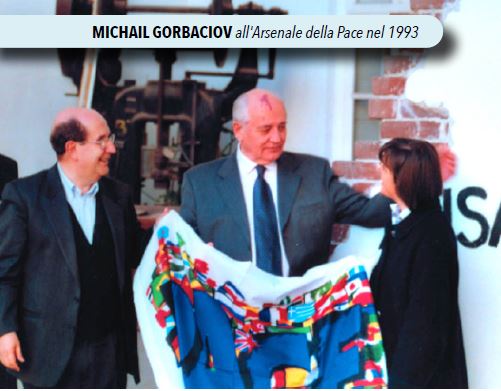Good intentions
Publish date 30-12-2022
When characters like Mikhail Gorbachev or Elizabeth II of England die, it is necessary to reflect on the historical significance of their work. In particular, given the topicality of the Russian-Ukrainian crisis, it is worth delving into Gorbachev's legacy.
Centuries have passed since the years in which he led the USSR (1985-1991): for generations Z and Alpha that world is completely incomprehensible, as much as the Middle Ages can be.
However, it is important to relive the end of real socialism in the Soviet Union, because, through Gorbachev's political parable, we will have one more tool to understand what is happening now in Russia.
When young Mikhail (he was then 54, a very young age by the standards of the Soviet gerontocracy) became secretary of the Communist Party of the Soviet Union (CPSU) in March 1985, he was fully aware of the structural weakness of the USSR : a stagnant and precarious economic industrial apparatus; military expenditure which represented an unsustainable mortgage on the country's development; a political situation stifled by the almighty communist party; a society eager for well-being.
Gorbachev's political program centered on a revitalization of communism through two keywords: perestroika and glasnost'.
Reconstruction and transparency. Gorbachev's idea was to restructure the system, opening glimpses of freedom in the economic and political fields (the socialist rule of law). The deep belief - but definitely wrong - was that the Russians would never question socialism; they simply would have liked to see it reformed, in the wake of the authentic Leninist tradition.
However, Soviet society welcomed these reforms in the opposite way from Gorbachev's intentions.
Between 1989 and 1991 the unpredictable happened: the collapse of the Berlin Wall, German unification, the end of the political and military control of the satellite countries of Eastern Europe (Warsaw Pact), the disintegration of the political monopoly of the CPSU and Soviet institutions.
In the eyes of Westerners, and not so much of Russians, Gorbachev had two merits: having introduced freedom of opinion and association in Russia and not having responded with violence to the progressive fragmentation of the Soviet empire (the primary motivation for awarding the Nobel for peace in 1990).
Just the introduction of freedoms in Russia is an element to underline.
Throughout the twentieth century, the Russians experienced only two moments of effective freedom: the first between the February Revolution and the October Revolution of 1917, the second right in the period of Gorbachev's reforms and the first years of Yeltsin's presidency. The entire Soviet parable from the Bolshevik revolution of 1917 to 1991 was completely devoid of freedom. Arising as a response to tsarist authoritarianism and liberation of the working class, the Soviet Union never managed to be a truly democratic and free state. Since 1917 first Lenin and then Stalin established a violent and inflexible one-party regime. Since 1956, de-Stalinization has not meant freedom, only less oppressive control.
Totally unprepared for democratic life, Russian society in the 1990s lived that freedom in a wild and uncontrolled way, thus plunging into an unprecedented economic crisis and a fierce struggle to grab the assets of the dying Soviet state. It was precisely from the rubble of what remained of the Soviet state that the figure of Putin emerged who, as an obscure KGB official, exploited his profound knowledge of the malaise of the Russian people and of the old power apparatuses, to build solid personal power, based on the resentment, on the desire for revenge, on suspicion of the West.
Renato Bonomo
NP October 2022








